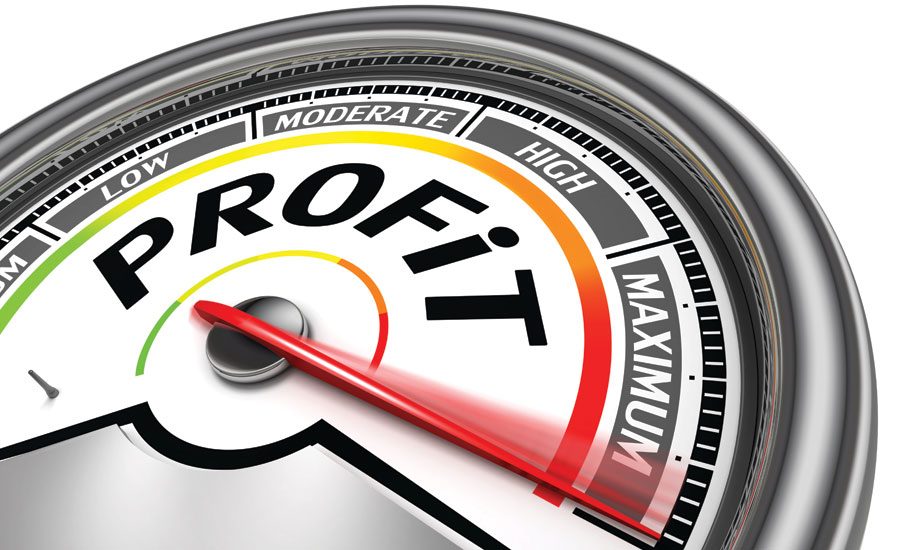Standing on a 40-foot stage, perched 25 feet in the air, nailing a rake board on the gable end of a home, I reached into my tool belt to grab more nails. I’m not sure if my hands were sweaty from the 90-degree heat or from the fact that there was only air between me and the ground below, but as I pulled one nail from the pouch, five others cascaded to the ground. Within seconds, a loud and sarcastic voice boomed from below, “You’re dropping the profits!”
As a teenager I spent my summers on construction sites, pounding nails for a second-generation custom home builder. As a young and impressionable individual, I learned a lot of lessons on those job sites, many of which I still reflect on today in my personal and professional life. While the boss’ comments about dropping the profits might have seemed funny (to others) at the time, there was a certain amount of sincerity in his voice, as well as truth in the statement.
We are moving into a new era in the restoration industry. Consolidation is beginning to take shape with suppliers and contractors, and margins are being squeezed by Third Party Claims Administrators and carrier-controlled vendor programs. In the coming years, we will see private equity firms gobble up restorers and lean them out to provide deeper returns on their investments. Pricing will most likely fall as smaller companies strive to remain competitive. However, it is my firm belief that all of this will provide a unique window of opportunity for some savvy individuals to make more profits than they ever have by capitalizing on areas where those profits already exist for the taking.
Let me begin by setting the stage with some compelling reasons why this is the case. First, consolidation slows down business. Larger companies react and make decisions at a much slower rate than smaller ones do. Second, lean competitors force businesses to become more efficient, requiring less effort to produce the same or better results. Third, the people element of the restoration business will never change. This is an emotionally-charged transaction, and human interaction always presents opportunities to add value. Lastly, restoration services will never become a commodity because each and every project is unique. No two homes are the same; consequently, no two losses are the same.
With all of this in mind, let’s explore three strategies for harvesting gross profit dollars that already exist but are overlooked by many.
Speed
One of the common denominators among successful companies in the restoration industry is undoubtedly their ability to act swiftly and with a sense of purpose. Perhaps this is because most of the work opportunities in restoration are generated by an emergency event. But the need to move quickly goes beyond individual jobs. There has to be a clear understanding and respect for the sense of urgency necessary to execute at all levels of business—from estimating to billing and everything in between.
The quantifiable rewards of this behavior at the gross profit level are remarkable. Projects that move through the production pipeline faster generally do so at a reduced cost and with greater efficiency. The savings are realized in the indirect project management expense, decreased financing costs for operating capital, and increased cash flow, capacity, and customer satisfaction. All of this can equate to hundreds, if not thousands, in cost savings to the contractor every day.
This represents just one of the many ways contractors can increase or “harvest” gross profits that already exist within the company. The best part is, it’s available to all, requires very little additional effort to realize, and doesn’t involve raising prices or selling additional services. So what does it look like in practice? Jobsites are visited faster and more often, phone calls are returned promptly, estimates are submitted the next day, invoices are delivered the same day the projects are complete, and there is an extremely low tolerance for anything that slows down the process.
Capitalization
As a teacher, my wife has a term for those rare and fleeting moments when you have a child’s attention and they are open to learning. She calls them “teachable moments.” If you can learn to identify and capitalize on these moments, a wealth of knowledge can be transferred in a very short period of time. These opportunities exist not just in education, but in business as well. I call them “moments of profitability.”
Have you ever looked at a project, building material or service and thought to yourself, “given the circumstances, I could charge whatever I want and the customer would be willing to pay”? Or perhaps been in a situation where the value of the materials you were trying to restore paled in comparison to the money being lost from business interruption or loss of use? Or maybe even a scenario where you could call on a unique skillset of your staff and get the job done more cost effectively than any of your competitors? These are all moments of profitability.
These moments, big or small, don’t pop up every day. The opportunities to sell your service above market price or deliver it under standard cost vanish as quickly as they appear. However, when they are recognized and capitalized on, it’s like feeling a baseball bat bend in your hands when you square up with a ninety-two-mile-per-hour fast ball. It leaves the ballpark as fast as it comes to the plate. Homerun!
Waste
There is a ton of waste in the restoration business and I’m not talking about dirty water. I am talking about time and service. Waste is defined as those activities that do not add value to the form or function of a product or service. Value is the worth placed on something for which a customer is willing to pay—the operative part of that statement being the willingness to pay. Now think about all the activities that are performed on just a routine water loss that the customer may not be willing to pay for: loading equipment, taking inventory of supplies and equipment, waiting on decisions, completing paperwork, cleaning and maintaining equipment, call backs, supply runs, etc. The list is long.
These non-value-added activities can often account for the majority of the total project time. This means there is more waste in the service than billable value. Yet, most operators in a service industry like restoration will put more effort into trying to improve value-added activities when they should really be looking to minimize waste.
Along those same lines, we can look at the value-added activities being performed every day on a jobsite but not being billed. These are the freebies, giveaways, or even oversights by well-intended technicians that were either missed on the initial scope or simply given to the customer in a manner of goodwill. Someone is paying for these activities and if it isn’t the customer, then it’s the contractor. I once worked for a very wise businessman whose motto was simple. He said, “We are not a bank, and we don’t work for free.” Those are good words to operate by.
I have always said that profitability in business is a very simple equation: sell your products and services for more than it takes to produce them and you will never go wrong. But, we must remember that there are two sides to that equation. There is plenty of profit already built into restoration services. If there wasn’t, then investment firms would have no interest in buying companies in the restoration industry. The profit is there. It’s just waiting to be harvested.
All of this requires less effort and is much more rewarding than arguing with an adjuster because you feel the Xactimate unit price for drywall is not high enough. That’s like trying to convince a 60-year-old tradesman that we didn’t need those nails I dropped. So become a gross profit harvester in your business by speeding up the process, capitalizing on opportunities swiftly, and minimizing or eliminating the waste. In short—stop dropping the profits!







Report Abusive Comment